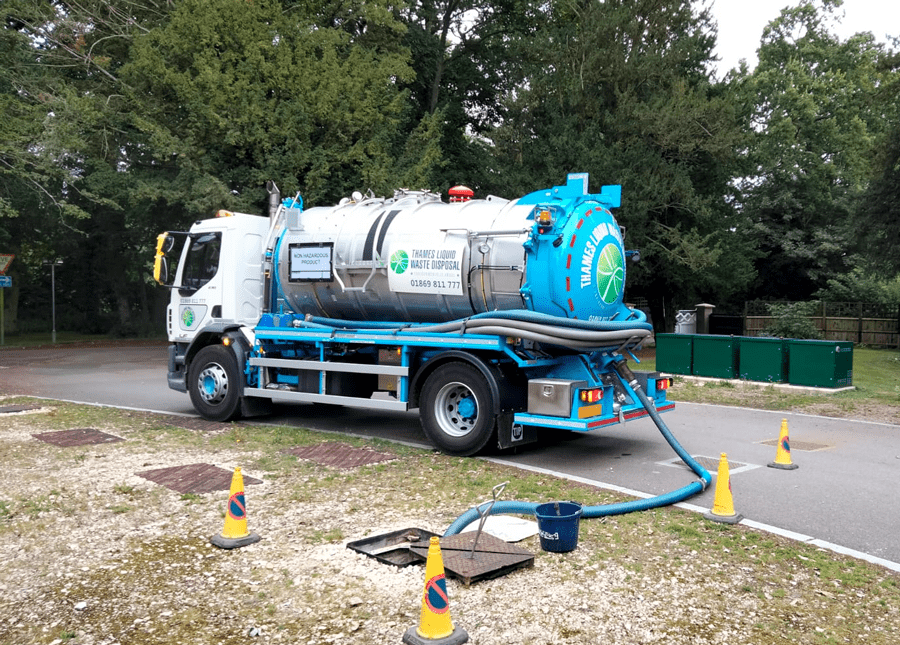Some Of Reclaim Waste
Some Of Reclaim Waste
Blog Article
Rumored Buzz on Reclaim Waste
Table of Contents10 Simple Techniques For Reclaim WasteThe Facts About Reclaim Waste UncoveredReclaim Waste - QuestionsThe Best Strategy To Use For Reclaim WasteWhat Does Reclaim Waste Do?
Check out the types, occurrences, and kinds of fluid waste. Domestic sewer waste describes the waste and items from a household septic storage tank. This type of waste is produced by people in houses, schools, and various other structures. This only includes sewage-disposal tanks that have a drain area. The proper monitoring and disposal of domestic sewage waste need fluid waste to be transferred to a sewer therapy plant where the appropriate techniques and equipment are put on cleanse and get rid of waste.
Business waste often consists of potential threats, such as combustible materials or a mix of fluid and strong waste items, and calls for an extra sophisticated and detailed disposal procedure. The disposal of business waste generally entails the filtering of waste prior to transport to guarantee secure and proper disposal. Hazardous waste is produced from byproducts and runoff of commercial processes and manufacturing.
This kind of waste can not utilize the same sewage administration transport or processes as septic or industrial fluids. The industrial waste management procedure calls for the inspection and testing of liquid waste before it goes through the disposal procedure (liquid waste removal). Drainage waste is the fluid waste that originates from drainage and excess stormwater in highly populated areas or cities
Overflow waste can trigger contamination and flooding if not managed effectively. Discover more about sewer cleaning and waste management. Guaranteeing appropriate waste administration can stop catastrophes and minimize ecological injury. Both people in residential setups and professionals in commercial or production markets can gain from recognizing the processes and guidelines of fluid waste administration.
Unknown Facts About Reclaim Waste
Contact PROS Services today to find out about our waste monitoring and disposal solutions and the correct means to look after the fluid waste you create.
(https://www.behance.net/leonaube)This so-called 'wastewater' is not just a crucial resource yet, after treatment, will certainly be released to our land, waterways or the sea. Utilized water from toilets, showers, bathrooms, cooking area sinks, laundries and industrial procedures is recognized as wastewater.

water made use of to cool equipment or clean plant and tools). Stormwater, a form of wastewater, is drainage that flows from farming and urban locations such as roofings, parks, yards, roads, courses and gutters right into stormwater drains, after rainfall. Stormwater moves untreated straight to local creeks or rivers, ultimately reaching the ocean.
The Ultimate Guide To Reclaim Waste
In Queensland, a lot of wastewater is dealt with at sewer treatment plants. Wastewater is delivered from residential or industrial sites through a system of drains and pump terminals, referred to as sewage reticulation, to a sewer therapy plant. Local governments develop, preserve and operate most sewage therapy plants. Operators are certified under the Environmental Defense Act 1994 to release treated wastewater at an acceptable environmental standard into waterways.
The Department of Natural Resources encourages regional federal governments about managing, operating and preserving sewerage systems and therapy plants. In unsewered areas, regional federal governments may call for homeowners to set up specific or house sewer therapy systems to treat residential wastewater from commodes, kitchens, bathrooms and washings. The Division of Natural Resources authorises the use of household systems when they are proven to be reliable.
The majority of stormwater obtains no treatment. In some brand-new subdivisions, therapy of some stormwater to eliminate trash, sand and gravel has actually begun using gross toxin catches. Wastewater treatment takes place in 4 stages: Removes strong matter. Larger solids, such as plastics and various other items wrongly released to sewage systems, are gotten rid of when wastewater is passed with displays.
Utilizes little living organisms understands as resource micro-organisms to damage down and remove continuing to be dissolved wastes and fine fragments. Micro-organisms and wastes are incorporated in the sludge.
About Reclaim Waste
Nutrient elimination is not readily available at all sewage therapy plants because it requires expensive specialised equipment. Clear fluid effluent produced after treatment may still include disease-causing micro-organisms - industrial wastewater treatment.

This usually means wastewater needs to be dealt with or pollutants eliminated before it can be discharged to rivers. A lot of wastewater streams into the sewerage system. Under the Act, city governments provide approvals and licences for eco pertinent activities (ERAs) involving wastewater launches that could have a neighborhood effect. The department administers authorizations and permits to Periods including wastewater releases that might have a local or statewide impact.
The smart Trick of Reclaim Waste That Nobody is Talking About
Or else, samples are considered laboratory evaluation. Commonly numerous examinations are needed to develop the levels of each of the various contaminants such as oils, hefty metals and pesticides in water. Monitoring provides valid info regarding water high quality and can validate that licence conditions are being satisfied. The info gotten via surveillance gives the basis for making water high quality decisions.
Report this page